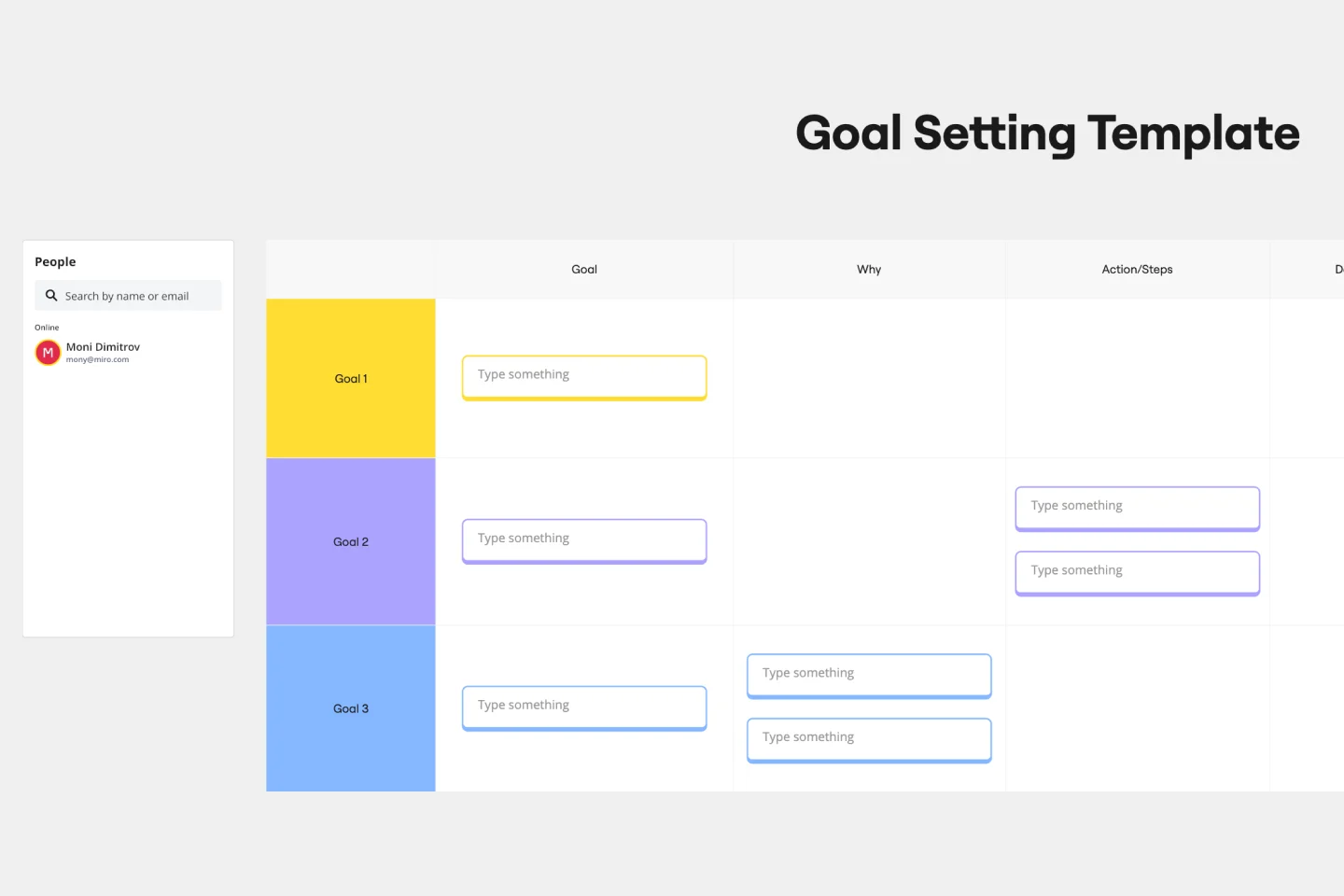About the SMART Goals Template
The SMART Goals template helps you think strategically about your targets and develop a clear plan to accomplish them without sounding too vague or unrealistic. The SMART method points you in the right direction, and that’s why many professionals and teams use this methodology to create their strategies. It’s a great tool to design a plan and keep track of your progress.
What are SMART goals?
SMART is a framework that stands for: Specific, Measurable, Attainable, Relevant, and Timely. Keep each of these parameters in mind anytime you set a goal to adhere to the SMART framework. Setting SMART goals ensures that your objectives are both achievable and clear to all team members.
The SMART model can also be used to reevaluate and refine goals during the run of a project.
Why you'll love our SMART goals templates
A SMART goal template is highly beneficial for teams because it gives you a structured framework that improves clarity and focus. By ensuring that goals are Specific, Measurable, Achievable, Relevant, and Time-bound, people can clearly understand what is expected of them and the criteria for success.
The SMART framework helps align individual contributions with the team or organization's overall objectives, fostering collaboration and accountability. Additionally, having a shared tool to define and track progress toward goals can boost motivation and promote open communication, as teams can easily identify milestones and adjust their strategies as needed. Overall, a SMART goal template empowers teams to work more effectively and achieve their objectives with confidence.
Benefits of setting SMART goals
Setting goals can be overwhelming, especially for a big project. It’s hard to conceptualize every step from the beginning, leading to objectives that are too broad or too much of a stretch.
SMART goals, by contrast, allow you to set goals that are clear, actionable, and effective. When working with a team, SMART goals help you stay aligned, agree on objectives, and keep up with deadlines. As an added benefit, you can loop in new employees without conducting extensive, time-consuming training and inform stakeholders easily by sharing the SMART Goals template.
Set your own SMART goals
Miro is the perfect tool to create and share your team’s SMART goals. Get started by selecting this SMART Goals template. Then, follow these steps to fill in each section:
S - Specific
What do you want to accomplish?
To be specific, add as many ideas as you can to identify patterns and determine the particular goal you want to pursue. Be careful not to get too broad and instead think about a specific area of focus.
As you brainstorm, add sticky notes, move them around the board, and cluster ideas with shapes and frames to stay organized.
M - Measurable
How will you know when you accomplished your goal?
Make sure your goals are measurable by adding details, metrics, and performance indicators, making note of anything you want to track. You can also add more templates to your board like Gantt charts, milestone charts, or action plans to have a more complete overview of a project.
A - Attainable
How can the goal be accomplished?
To make your goals attainable, consider splitting them into smaller steps that you prioritize so you can achieve results quickly. And, think about whether the goals are realistic, given constraints like financing.
R - Relevant
Will the goal meet your short- and long-term needs?
To ensure your goals are relevant, be sure to align them with your company’s goals, mission, and vision. You can easily share your goals with leaders to get their input.
T - Timely
When will the goal be accomplished?
To create timely goals, make sure each one gets assigned a deadline, whether short-term (“what can I do today?”) or long-term (“what can I do in six months?”). Time-bounded goals ensure lofty ideas can be broken down into actionable steps and make tracking milestones easier and more efficient.
Example of a practical SMART goal framework
Here is how to use SMART goals examples, and how you can put the SMART Goal framework into practice within the marketing context:
GOAL: your marketing team will increase brand awareness by 5% this quarter by revamping the content strategy and creating new content that improves your lagging brand awareness.
Specific: to increase brand awareness by 5%.
Measurable: if they achieve less than 5%, fail to revamp content strategy, or do not create new content, they have not reached their goal.
Attainable: the team has outlined the necessary steps for achieving this goal.
Relevant: the team acknowledges that their current brand awareness is lagging.
Time-based: the team has determined that they will achieve their goal by the end of the quarter.












